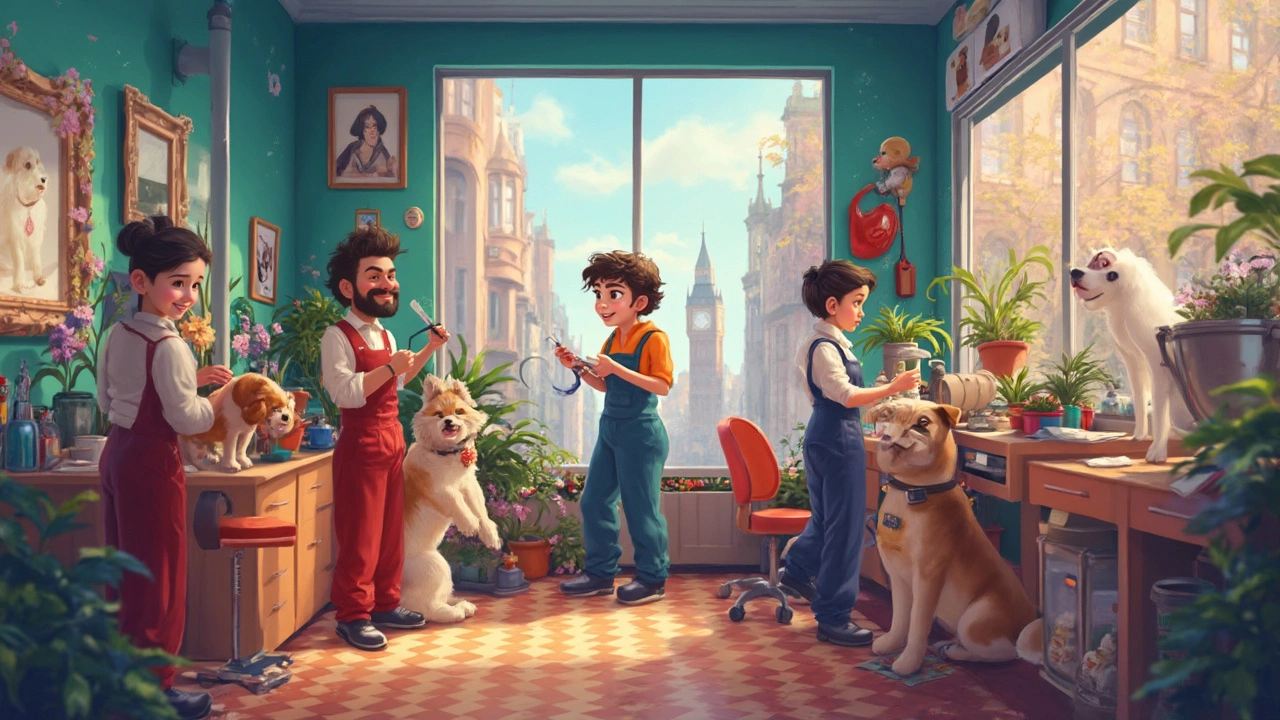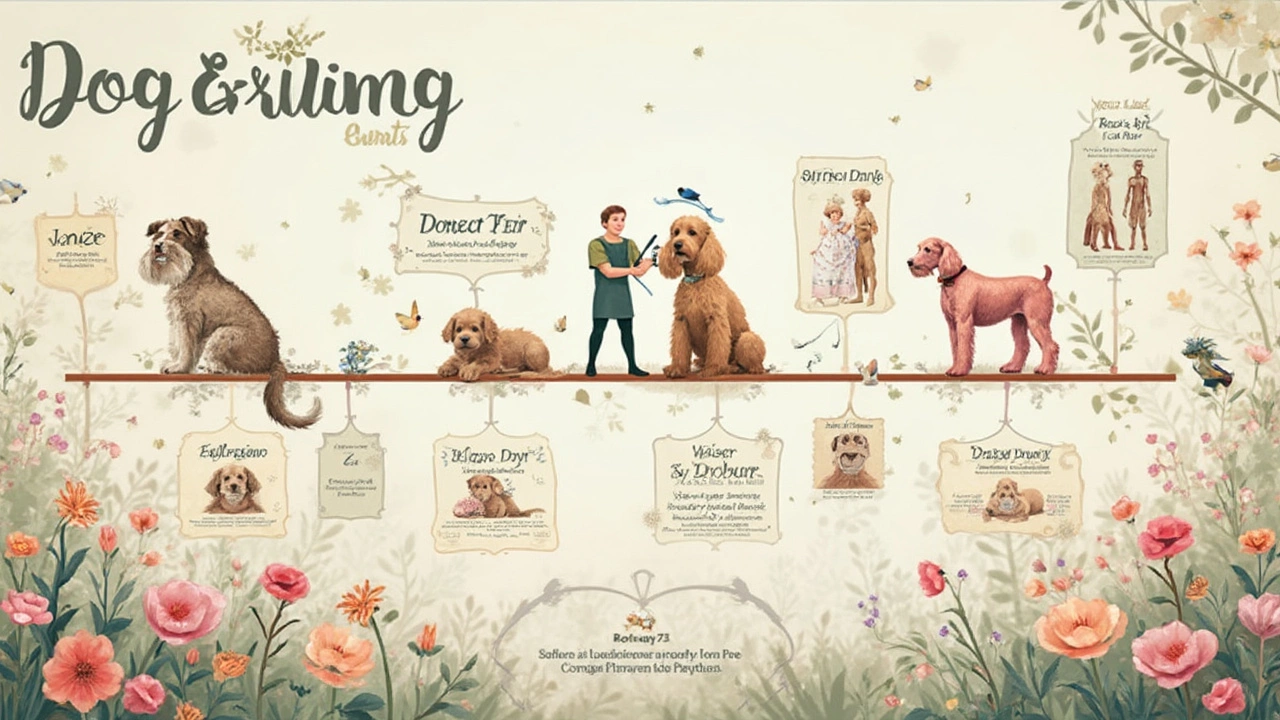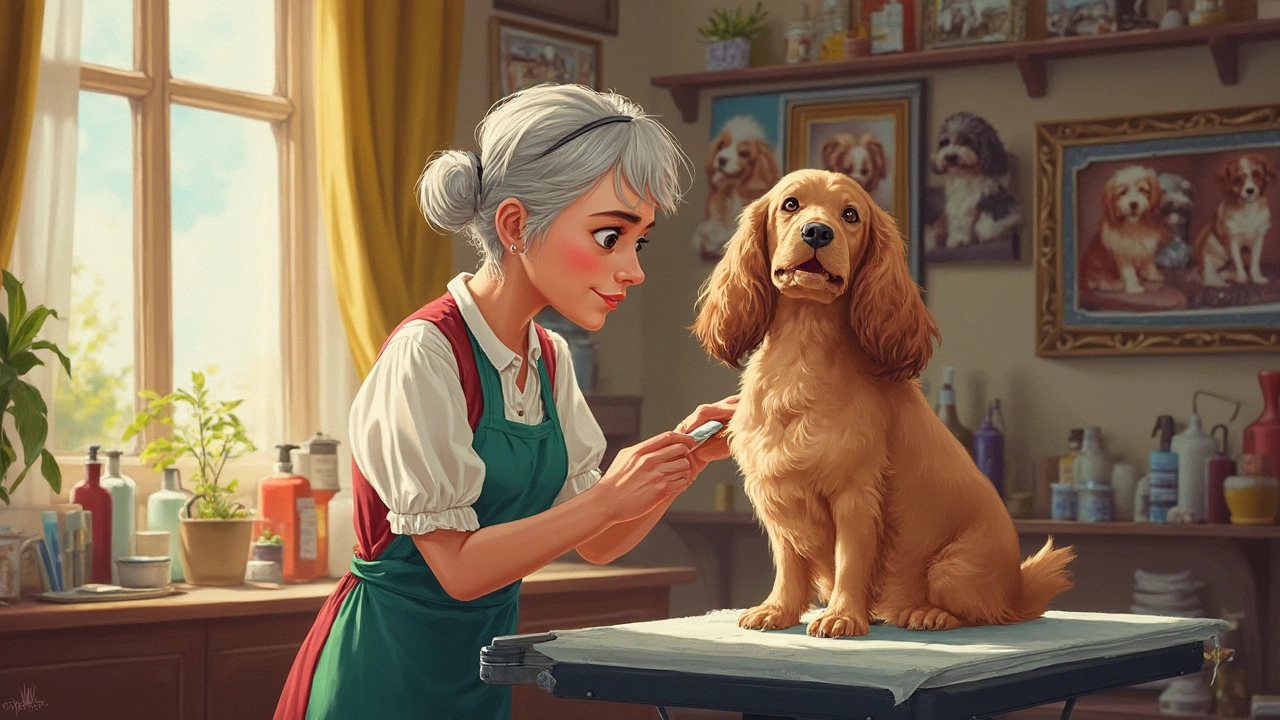Ever dropped off your fluffy friend at the groomer's and been told it'll take about four hours? You aren't alone in wondering why a simple haircut takes an entire afternoon. It's not just about a quick rinse and cut. Grooming is a detailed process that keeps your pet healthy and happy.
From the moment you hand over the leash, groomers start assessing what needs to be done. It's not one-size-fits-all. Different breeds have different needs, and a poodle's coat requires different care than a Labrador's short fur. Then there are the checks for mats in the fur, skin conditions, or any signs of trouble. Each of these can add time to the process.
Next, there are the tools of the trade. We're talking clippers, nail trimmers, scissors, brushes, shampoos, and conditioners. Each dog's unique characteristics dictate which tools to use. Plus, keeping the equipment clean for hygiene adds even more minutes to the clock.
The Grooming Process
When it comes to dog grooming, it's much more than a quick splash and dry. Groomers follow a structured routine to ensure that each pup leaves feeling fresh and tidy. Understanding what happens behind those salon doors can help you appreciate why it sometimes takes a little longer than expected.
Initial Health Check
Before anything else, the groomer performs a quick health check. They're looking for skin issues, ear infections, or any unusual lumps and bumps. If they spot anything concerning, they might recommend a vet visit, which ensures your dog stays healthy.
Brushing and Detangling
Groomers start with a thorough brushing to remove tangles and loose hair. This step is crucial, especially for breeds with thick or curly coats. Skipping this could turn bath time into a nightmare of matted fur.
Bathing
Bath time isn't just about smelling good. It's about cleaning away dirt, grease, and allergens. Groomers use high-quality shampoos and conditioners suited for each dog's care needs. For example, sensitive skin dogs get a gentle, hypoallergenic wash while double-coated breeds might need a de-shedding formula.
Drying and Styling
After bathing, dogs are carefully dried using specialized dryers. This is a delicate step. Too much heat can irritate the skin, so groomers are cautious. Once dry, the styling begins. Clippers or scissors are used to achieve that perfect cut. Each style might have specific requirements, especially for show breeds.
Nail Clipping and Final Touches
Nail clipping isn't just for appearance. Overgrown nails can cause pain or affect the way a dog walks. Groomers trim them to an appropriate length. Then come the finishing touches: cleaning the ears, brushing the teeth, and sometimes a little perfume spray to leave your pet smelling fresh.
Some salons take it a step further by offering add-ons like teeth cleaning or flea treatments. All these elements combine to give your furry friend a comprehensive grooming experience. Remember, this level of detail takes time but ensures your dog leaves the salon looking and feeling their best.
Tools and Techniques
Dog grooming isn't just about the final cut; it's about using the right tools and techniques to ensure each dog leaves looking their best. Let's look at some of the key tools every groomer relies on.
Essential Grooming Tools
First up is the trusty clipper, which is a staple in every dog grooming toolkit. These come with various blade attachments for different lengths and hair types. A groomer's skill in handling the clipper can significantly impact the grooming time, especially for dogs with matted fur.
Next are the brushes and combs, vital for detangling and removing loose hair. There are slicker brushes for undercoats, pin brushes for longer hair, and bristle brushes for short-haired dogs. A good groomer knows which brush to use for each dog, ensuring a comfortable experience for your furry friend.
Haircut and Styling Techniques
Scissors aren't just about cutting hair; they're about precision. Groomers use different techniques like thinning, blending, and feathering to achieve the perfect look. A Shih Tzu and a Pomeranian might need distinct styling approaches, showcasing the groomer's artistic eye.
The Bathing Process
Before any cutting begins, dogs are usually bathed with shampoos and conditioners tailored to their skin type. Some shampoos help with sensitive skin, while others enhance fur color or aid in de-shedding. A thorough rinse ensures no residue remains, vital for preventing skin irritation.
An often-overlooked part of pet grooming is ear cleaning and nail trimming. Special cleaners are used for ears to avoid infections, while nail trimming requires precision to avoid cutting the quick, which can be painful for the dog.
Advanced Tools
For groomers who work with all breeds, having a dryer is essential. High-velocity dryers help in fluffing up the fur and drying it quickly. Plus, adjustable grooming tables make the process safer and more comfortable for both the dog and the groomer.
And what about time tied down by grooming techniques? According to a survey by the National Dog Groomers Association, the right combination of tools and techniques not only ensures safety but also can cut grooming time by up to 20%. So, when you hear four hours, know it's four hours of dedicated care!

Time Factors
Time is a major element in the dog grooming process and understanding why it takes so long can make the wait easier. Let's dive into what eats up the hours at the groomer's.
Breed and Coat Type
Different breeds have different grooming needs. A Shih Tzu or a Poodle with curly hair will need more attention compared to a Boxer with short, coarse fur. Longer or more complex coat types require extra time for brushing out tangles and mats.
Dog's Behavior
Some dogs enjoy the grooming process, while others might be more on edge. Groomers need to create a calm environment and may have to take breaks to keep nervous dogs comfortable which adds extra time. If a dog is particularly uncooperative, this can significantly slow down the grooming process.
Condition of the Coat
If the dog's coat isn't in the best shape, it takes longer to rectify these issues. Matted fur, for instance, needs to be carefully detangled to avoid hurting the dog, and this can be a time-consuming task.
Extra Services
Full-service grooming often goes beyond just a shampoo and haircut. Services like ear cleaning, nail trimming, and teeth brushing are standard parts of a grooming package. Each of these tasks requires time to do properly.
| Task | Time (minutes) |
|---|---|
| Brushing and Dematting | 30-60 |
| Bathing and Drying | 20-45 |
| Clipping or Trimming | 30-90 |
| Additional Services | 15-30 |
As you can see, the time adds up quickly. Knowing these factors can help ease the waiting game and give you a new appreciation for the groomers who patiently work to make sure your pet looks its best.
How to Prepare
Getting ready for a groomer visit can make the experience smoother for both you and your pup. It's all about helping the process go as smoothly as possible. Here’s what you can do to get your furry friend ready for their salon day.
Get Your Dog Familiar
Dog grooming isn’t something dogs just know how to handle, especially if they’re new to it. Beforehand, spend some time getting your dog comfortable with being touched and handled all over. This includes paws, ears, and tails—all key areas groomers focus on.
Brush Regularly
Keeping your dog's fur de-tangled goes a long way. Regular brushing not only reduces mats but also helps your pup stay relaxed during grooming. Make sure you're using the right brush for your dog’s coat type for effective results.
Do a Quick Health Check
Check your pet over a few days before the appointment for any signs of injury or irritation. Alerting the groomer ahead of time lets them adjust the grooming to avoid causing discomfort.
Walk It Off
A quick walk before heading to the groomer can help expend excess energy, making your dog easier to handle. Plus, it gives them a chance to take care of any bathroom needs beforehand.
Packing for the Day
- Ensure your dog’s vaccinations are up to date and have the records handy if it’s the first appointment.
- Bring any special treatments or shampoos recommended by your vet.
- Don’t forget favorite toys or a blanket to provide comfort if your dog gets anxious.
Preparing properly can ease the grooming process, reducing both stress and grooming time. It’s a small effort for a big payoff—the safety and happiness of your pet!

Choosing the Right Groomer
Finding the right groomer for your dog is crucial. It's about more than just finding someone who gives a good cut; it’s about trust and expertise. So, how can you find the best fit for your furry friend?
Do Your Homework
Start by asking your veterinarian or fellow pet owners for recommendations. Word of mouth can lead you to a trusted professional. Also, check online reviews to see what others have experienced. Remember, a groomer with a great reputation often has a waiting list, but it’s worth the patience.
Visit the Facility
Before booking an appointment, pay a visit to the grooming salon. Is it clean? Does it smell fresh? Check if they have separate areas for different pets, preventing stress or anxiety for your dog. A quick tour can reveal the hygiene practices they adhere to.
Ask the Right Questions
Don’t shy away from asking questions. How often do they clean their tools? What shampoos and conditioners do they use? Do they have experience with your dog’s breed? Also, discuss any specific needs your dog might have, ensuring they can accommodate.
- Nail trims: How do they handle anxious dogs during this task?
- Special coats: Are they experienced in dealing with special fur types like curly or double-coated?
- Health concerns: Can they spot potential health issues during grooming?
Assess the Prices
While you might be tempted to go for the cheapest option, remember that you often get what you pay for. Quality grooming costs more because of the skill involved. Compare prices in your area, but prioritize quality over cost.
Trial Session
Book a simple service, like just a bath or nail trim, and observe how your dog is treated. This provides insights into their handling skills without committing to a full grooming session right away.
Choosing the right groomer is an investment in your dog’s well-being. Taking the time to find the right one pays off in wagging tails and happy visits every time.
